The Best Soil for Healthy Santa Rosa Plum Trees

Introduction to Santa Rosa Plum Trees
The Santa Rosa Plum Tree is a testament to innovation and fruit-growing excellence. This variety has captured the hearts of gardeners, and culinary experts. The tree blends beauty, productivity, and exceptional flavor.
Botanical Characteristics of the Santa Rosa Plum Tree
Scientific Classification and Physical Description
Scientific Name: Prunus salicina ‘Santa Rosa’
The Santa Rosa Plum Tree has:
- Moderate Size: Growing 15-20 feet tall
- Spreading Canopy: Rounded shape with graceful branches
- Bark Characteristics: Smooth, gray-brown bark with a distinctive texture
- Leaf Structure: Broad, lance-shaped leaves with serrated edges
Unique Identifying Features
What sets the Santa Rosa Plum Tree apart from other plum varieties? Several characteristics make it special:
- Vibrant Fruit: Large, purple-red plums with minimal fuzzy skin
- Early Blooming: White to light pink blossoms in early spring
- Dense Foliage: Green leaves that provide both shade and ornamental value
- Rapid Growth: Quick establishment compared to other plum varieties
Growth Patterns

The Santa Rosa Plum Tree exhibits impressive growth characteristics:
- Average Height: 15-20 feet when mature
- Spread: 15-18 feet wide
- Growth Rate: Moderate to fast, with significant annual growth
- Lifespan: Can produce fruit for 20-30 years with proper care
Origin and Development: The Luther Burbank Legacy
The Santa Rosa Plum Tree is linked to the work of Luther Burbank. It was developed in the late 1800s in Santa Rosa, California. This plum variety represents a plant breeding and agricultural innovation.
Luther Burbank’s Horticultural Genius
Luther Burbank dedicated his life to developing new plant varieties. His work with the Santa Rosa Plum was significant:
- Breeding Timeline: Developed between 1880-1890
- Location: Santa Rosa, California
- Goal: Create a plum variety with flavor and adaptability
- Breakthrough: Hybridized Japanese plum varieties to create the Santa Rosa
Historical Significance in California Agriculture
The Santa Rosa Plum Tree marked a moment in California’s agricultural landscape:
- Agricultural Revolution: Provided farmers with a productive and flavorful plum
- Economic Impact: Became a cornerstone of California’s fruit production
- Horticultural Innovation: Demonstrated the potential of plant breeding
- Cultural Importance: Symbolized California’s emerging agricultural prowess
Development and Refinement Process
Burbank’s approach to developing the Santa Rosa Plum was innovative:
- Source Varieties: Imported Japanese plum varieties
- Selective Breeding: Selected for flavor, size, and disease resistance
- Many Generations: Developed through careful cross-pollination
- Continuous Improvement: Refined the variety to maximize its potential

Planting and Growing Conditions for Santa Rosa Plum Trees
Ideal Growing Locations
Selecting the location is important for cultivating a Santa Rosa Plum Tree.
USDA Hardiness Zones
The Santa Rosa Plum Tree performs best in:
- Primary Zones: 5-9
- Optimal Zones: 6-8
- Most Successful Region: Western United States, particularly California
Climate Requirements
Sunlight Needs:
- Full Sun Exposure: Minimum 6-8 hours of direct sunlight daily
- Ideal Placement: South or southwest-facing locations
- Partial Shade Tolerance: Limited, can manage with morning sun and afternoon shade
Soil Preferences
Soil Characteristics:
- pH Range: 6.0-6.5 (acidic to neutral)
- Drainage: Well-draining soil is important
- Soil Composition: Loamy, rich in organic matter
- Avoid: Heavy clay or waterlogged conditions
Comprehensive Planting Guide
Timing for Planting
Best Planting Seasons:
- Late winter
- Early spring
- Fall (in mild climate regions)
- Avoid: Extreme temperature periods
Spacing and Planting Instructions
Spacing Requirements:
- Tree-to-Tree Distance: 15-20 feet
- Orchard Planting: 20 feet between rows
- Container Planting: Minimum 20-gallon container
Step-by-Step Planting Process:
- Choose a sunny, well-draining location
- Dig a hole twice the width of the root ball
- Ensure hole depth matches root ball height
- Mix native soil with organic compost
- Place the tree, ensuring straight positioning
- Backfill with amended soil
- Water
- Add 2-3 inches of mulch around the base (avoid trunk contact)
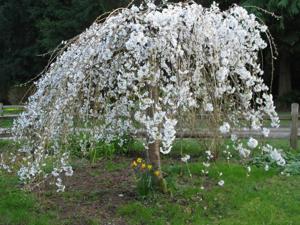
Soil Preparation Techniques
Soil Amendment Strategies:
- Add organic compost
- Incorporate aged manure
- Use balanced, slow-release fertilizers
- Test soil pH before planting
- Improve drainage with sand or perlite for heavy soils
Drainage Optimization
- Raised Beds: Excellent for poor-draining areas
- Soil Mounding: Improves water runoff
- Perforated Drainage Pipes: For wet locations
Warning Signs of Poor Soil Conditions:
- Standing water
- Compacted soil
- Yellowing leaves
- Stunted growth
Container Planting Options
Container Considerations:
- Use dwarf Santa Rosa Plum varieties
- Select containers with drainage holes
- Use high-quality potting mix
- Ensure adequate sunlight
- Protect from extreme temperatures
Recommended Container Size:
- Young Trees: 15-20 gallon containers
- Mature Trees: 25-30 gallon containers
Understanding and implementing these guidelines ensures the trees establish roots and produce fruit.
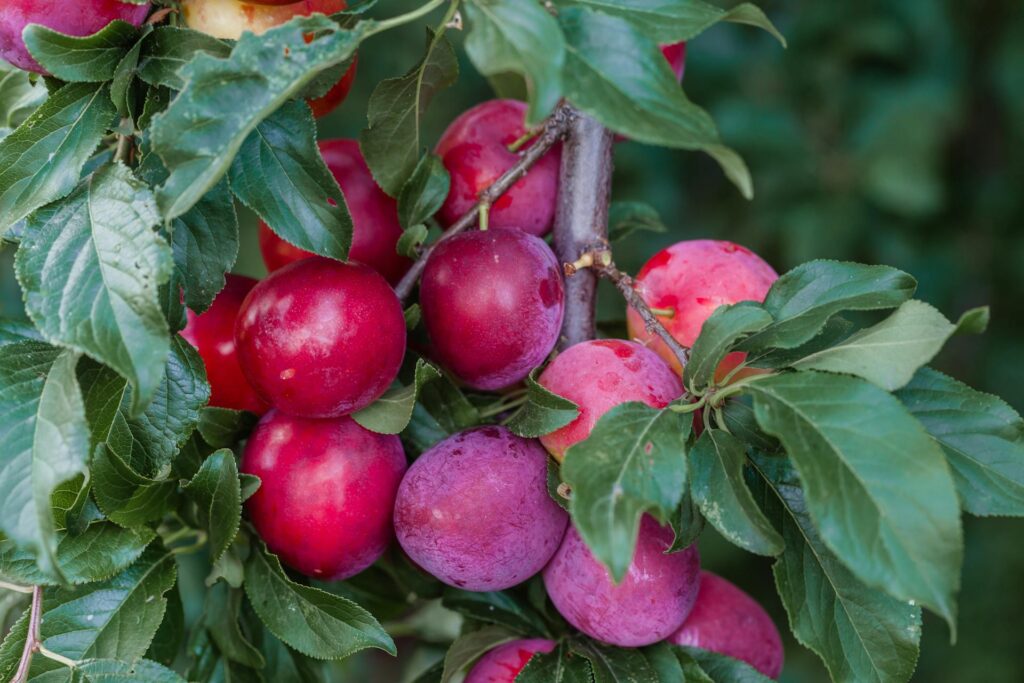
Care and Maintenance of Santa Rosa Plum Trees
Watering Requirements
Understanding the water needs at growth stages makes a difference in the tree and fruit production.
Watering Frequency and Techniques
Water Needs by Growth Stage:
- Young Trees (1-3 years):
- Weekly watering
- 10-15 gallons per watering
- Avoid surface-level sprinklings
- Mature Trees:
- Every 7-10 days during the growing season
- Reduced frequency during dormant winter months
- 15-20 gallons per watering
Irrigation Methods:
- Drip irrigation systems
- Soaker hoses
- Root watering
- Mulch to keep moisture
Signs of Water Stress
Under-Watering Indicators:
- Leaf curling
- Premature leaf drop
- Fruit size reduction
- Branch dieback
Over-Watering Symptoms:
- Yellowing leaves
- Root rot
- Fungal growth
- Stunted growth

Pruning Techniques
Pruning is an art that impacts tree health, shape, and fruit production. Santa Rosa Plum Trees need pruning to reach their potential.
Pruning Timing and Approach
Best Pruning Periods:
- Late winter (dormant season)
- Early spring before bud break
- Avoid pruning during active growth or fruit production
Pruning Objectives:
- Maintain open center structure
- Remove dead or diseased branches
- Improve air circulation
- Encourage fruit production
- Control tree size
Essential Pruning Tools:
- Sharp bypass pruners
- Loppers for larger branches
- Pruning saw
- Sterilization alcohol
- Protective gloves
Pruning Step-by-Step
- Remove any crossing or rubbing branches
- Cut out water sprouts and suckers
- Thin out dense interior branches
- Make clean, angled cuts
- Seal large wounds with pruning paint
Common Pruning Mistakes to Avoid:
- Over-pruning
- Using dull tools
- Improper cut angles
- Pruning during the wrong seasons
- Failing to sterilize tools

Fertilization Strategies
Proper nutrition is fundamental to a healthy, productive Santa Rosa Plum Tree.
Nutrient Requirements
Key Nutrients:
- Nitrogen
- Phosphorus
- Potassium
- Calcium
- Magnesium
Fertilization Schedule:
- Early Spring: High nitrogen fertilizer
- Late Spring: Balanced fertilizer
- Early Summer: Potassium-rich supplement
- Fall: Low-nitrogen preparation fertilizer
Fertilizer Types:
- Organic compost
- Slow-release granular fertilizers
- Liquid fertilizers
- Bone meal
- Composted manure
Organic vs. Synthetic Fertilization
Organic Methods:
- Slower nutrient release
- Improves soil structure
- Environmentally friendly
- Enhances the microbial activity
Synthetic Methods:
- Quick nutrient absorption
- Precise nutrient control
- Immediate plant response
- Lower volume required
Pollination and Fruit Production of Santa Rosa Plum Trees
Pollination Needs
The Santa Rosa Plum Tree has pollination characteristics that are important to fruit production.
Self-Fertility and Pollination Partners
Self-Fertility Status:
- Partially Self-Fertile: Produce some fruit without extra pollinators
- Best Practices: Planting a companion plum variety increases yield
- Recommended Pollination Partners:
- Methley Plum
- Beauty Plum
- Burgundy Plum
- Satsuma Plum
Pollinator Attraction Strategies:
- Plant flowering herbs nearby
- Maintain a diverse garden ecosystem
- Avoid pesticides that harm pollinators
- Create bee-friendly environment
Pollination Techniques
Natural Pollination:
- Rely on bees, butterflies, and other insects
- Maximize flowering plant diversity
- Provide water sources for pollinators
Hand Pollination Method:
- Use small paintbrush
- Collect pollen from flower stamens
- Transfer between blossoms
- Best done in the morning hours
- Repeat over many days
Fruit Development
Fruit Characteristics
Physical Attributes:
- Color: Deep purple-red skin
- Size: Large, 2-3 inches in diameter
- Texture: Smooth, minimal fuzz
- Flesh: Juicy, deep red to purple
- Pit: Semi-freestone
Flavor Profile:
- Sweet with tartness
- Rich taste
- Excellent for fresh eating
- Superior for cooking and baking
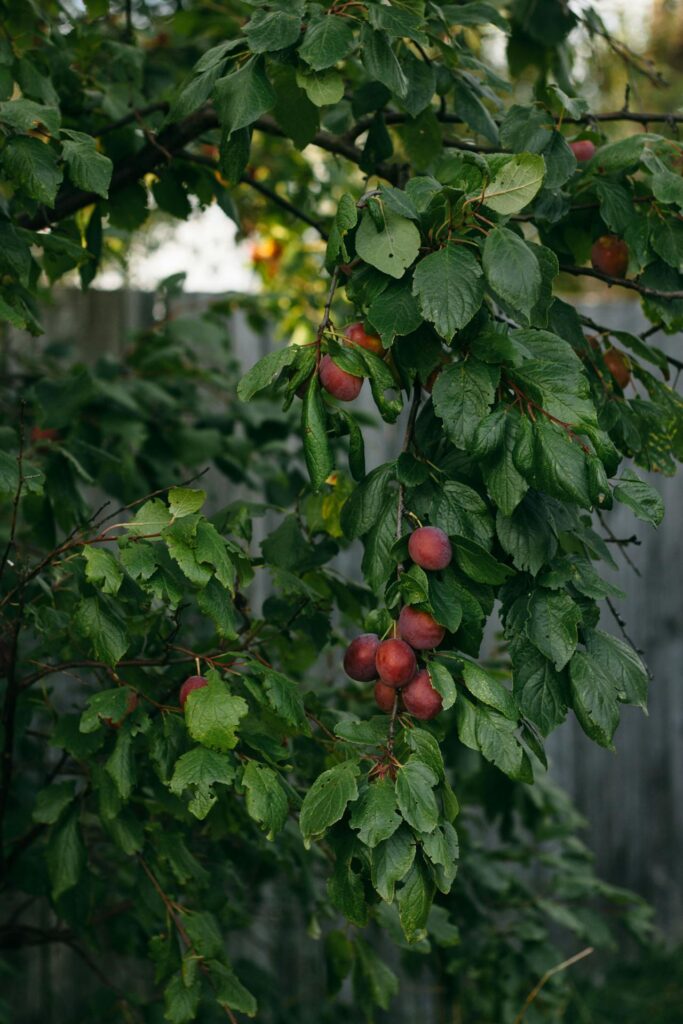
Harvest Indicators
Ripeness Signs:
- Softening of fruit
- Rich color development
- Give when squeezed
- Sweet aroma
- Easily detached from the branch
Harvest Timing:
- Primary Season: Mid-summer (June-July)
- Harvest Window: 7-10 days
- Best Harvest Time: Early morning
Harvesting Techniques
Recommended Tools:
- Pruning shears
- Soft collection basket
- Gloves
- Ladder (for taller trees)
Harvesting Steps:
- Gently twist fruit
- Support fruit while removing
- Avoid pulling or yanking
- Handle with care to prevent bruising
- Cool immediately after picking
Potential Yield:
- Young Trees: 20-30 pounds per tree
- Mature Trees: 100-150 pounds per tree
- Peak Production Years: 5-15 years after planting
Common Challenges and Solutions for Santa Rosa Plum Trees
Pest Management
Santa Rosa Plum Trees face pest challenges that need proactive and strategic management. Understanding these threats is important for a healthy and productive tree.
Common Pests
Primary Pest Threats:
- Aphids
- Tiny, soft-bodied insects
- Cluster on new growth
- Suck plant sap
- Spread viral diseases
- Plum Curculio
- Small weevils
- Create crescent-shaped cuts in fruit
- Lay eggs inside developing plums
- Cause fruit drop and damage
- Spider Mites
- Microscopic arachnids
- Thrive in hot, dry conditions
- Create a stippled leaf appearance
- Reduce photosynthesis efficiency
- Scale Insects
- Hard-shelled insects
- Attach to branches and leaves
- Drain tree nutrients
- Create honeydew that attracts ants
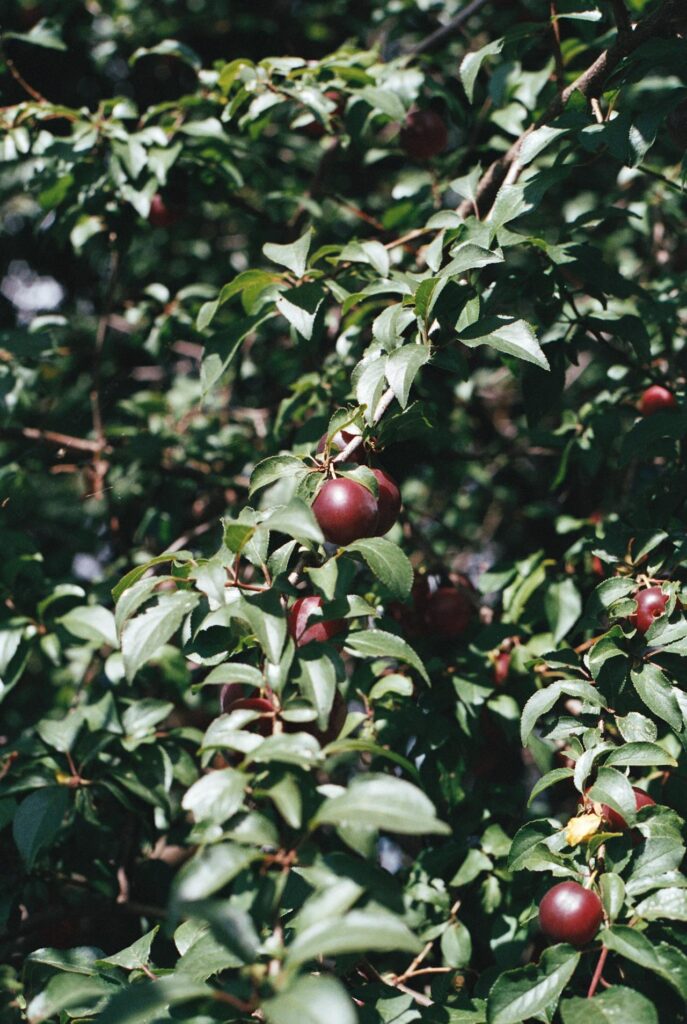
Pest Control Strategies
Organic Control Methods:
- Neem oil sprays
- Insecticidal soaps
- Beneficial insect introduction
- Pruning infested areas
- Maintaining tree health
Integrated Pest Management (IPM):
- Regular tree inspections
- Early detection
- Minimal chemical intervention
- Ecological balance preservation
- Targeted treatment approaches
Disease Prevention
Common Plum Tree Diseases
Primary Disease Challenges:
- Brown Rot
- Fungal infection
- Affects blossoms and fruit
- Creates soft, brown lesions
- Spreads rapidly in humid conditions
Leaf Curl
- Causes leaf distortion
- Reduces photosynthesis
- Weakens tree health
- Primarily a spring problem
Bacterial Canker
- Creates open wounds on branches
- Causes branch dieback
- Enters through pruning cuts
- Difficult to control
Powdery Mildew
- White powdery fungal growth
- Covers leaves and shoots
- Reduces fruit production
- Thrives in humid environments
Disease Prevention Techniques
Preventative Care Strategies:
- Proper pruning
- Adequate air circulation
- Consistent tree hygiene
- Balanced fertilization
- Appropriate watering techniques
- Resistant variety selection
Treatment Approaches:
- Copper-based fungicides
- Sulfur sprays
- Pruning infected areas
- Sterilizing pruning tools
- Maintaining tree stress reduction

Diagnostic and Treatment Strategies
Diagnostic Steps:
- Identify specific symptoms
- Isolate affected areas
- Consult local extension services
- Consider professional evaluation
- Put in place targeted treatment
Treatment Principles:
- Reduce chemical interventions
- Focus on natural solutions
- Address root cause
- Check treatment effectiveness
- Maintain tree health
Warning Signs Requiring Immediate Attention
Red Flags:
- Sudden leaf drop
- Unexplained branch dieback
- Fruit malformation
- Persistent pest infestations
- Unusual discoloration
- Weak or stunted growth
Recommended Action Steps:
- Immediate isolation of the affected tree
- Detailed symptom documentation
- Professional consultation
- Targeted treatment implementation
- Ongoing monitoring
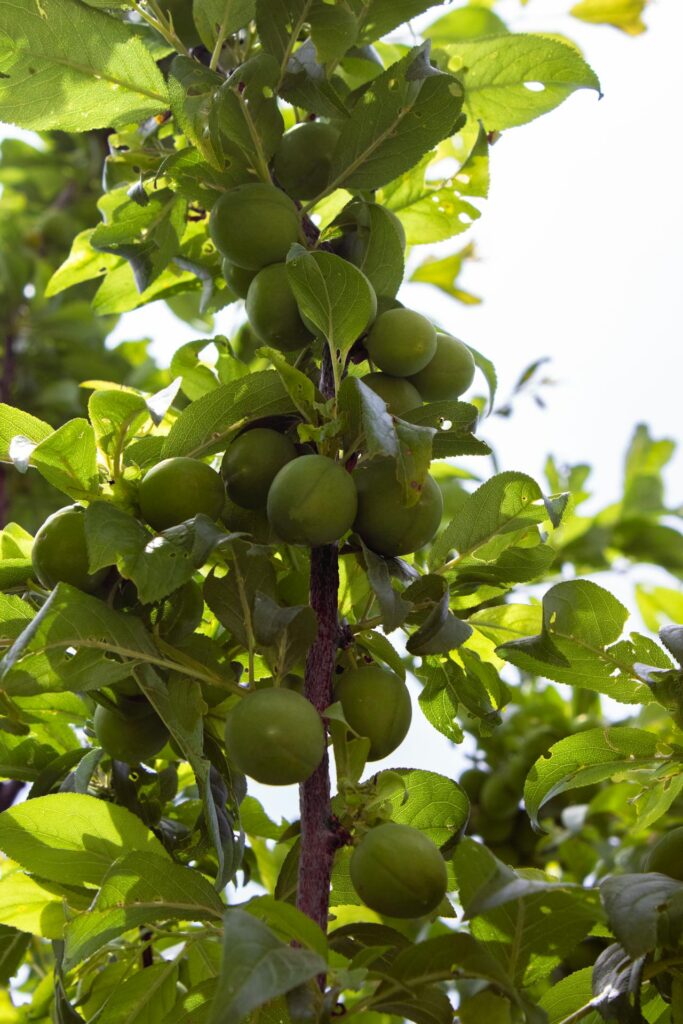
Storage of Santa Rosa Plums
Storage and Preservation
Long-Term Preservation
Preservation Options:
Freezing
- Slice and remove the pit
- Treat with ascorbic acid
- Layer on baking sheet
- Freeze
- Transfer to freezer bags
Canning
- Sterilize jars and lids
- Create simple syrup
- Pack plums
- Process in a water bath
- Store in a cool, dark place
Dehydrating
- Slice thin
- Remove pit
- Use a food dehydrator
- Maintain 135°F
- Store in airtight containers
Nutritional Information
Nutritional Profile
Vitamins and Minerals:
- Vitamin C
- Vitamin A
- Potassium
- Dietary Fiber
- Antioxidants
- Low-calorie fruit
Health Benefits:
- Supports digestive health
- Boosts immune system
- Promotes heart health
- Aids in weight management
- Supports skin health
Troubleshooting Common Issues with Santa Rosa Plum Trees
Growth Problems
Santa Rosa Plum Trees experience growth challenges that need diagnosis and strategic intervention. Understanding these potential issues is crucial for maintaining a healthy, productive tree.
Stunted Growth Causes

Primary Growth Limitation Factors:
Soil Conditions
- Poor drainage
- Inadequate nutrient composition
- Improper pH levels
- Compacted soil
Environmental Stressors
- Extreme temperature fluctuations
- Insufficient sunlight
- Water stress
- Wind damage
Nutritional Deficiencies
- Nitrogen imbalance
- Micronutrient deficiencies
- Mineral lockout
- Improper fertilization
Diagnostic and Solution Strategies
Leaf Discoloration Analysis:
- Yellowing Leaves: Potential nitrogen deficiency
- Brown Leaf Edges: Possible water stress
- Pale Leaves: Sign of iron deficiency
- Mottled Coloration: Potential virus or nutrient issue
Branch Dieback Management:
- Prune affected branches
- Sterilize pruning tools
- Investigate root system
- Check for pest infestations
- Assess tree health

Fruit Production Issues
Common Fruit Set Challenges
Poor Fruit Set Causes:
Pollination Problems
- Insufficient pollinator activity
- Incompatible pollinators
- Environmental barriers
- Timing misalignment
Environmental Stress
- Extreme temperature variations
- Drought conditions
- Excessive humidity
- Sudden climate changes
Nutritional Imbalances
- Improper fertilization
- Micronutrient deficiencies
- Soil mineral imbalances
- Excessive nitrogen
Fruit Drop Diagnostics
Reasons for Premature Fruit Drop:
- Inadequate water management
- Pest infestations
- Fungal infections
- Physiological stress
- Improper pruning
- Nutrient deficiencies
Prevention Strategies:
- Consistent watering schedule
- Balanced fertilization
- Pest management
- Regular tree health monitoring
- Proper pruning techniques
Malformed Fruit Identification
Common Malformation Causes:
- Incomplete pollination
- Pest damage
- Genetic variations
- Environmental stress
- Nutrient imbalances
Diagnostic Approach:
- Detailed visual inspection
- Comprehensive tree health assessment
- Soil and tissue nutrient testing
- Professional consultation if needed
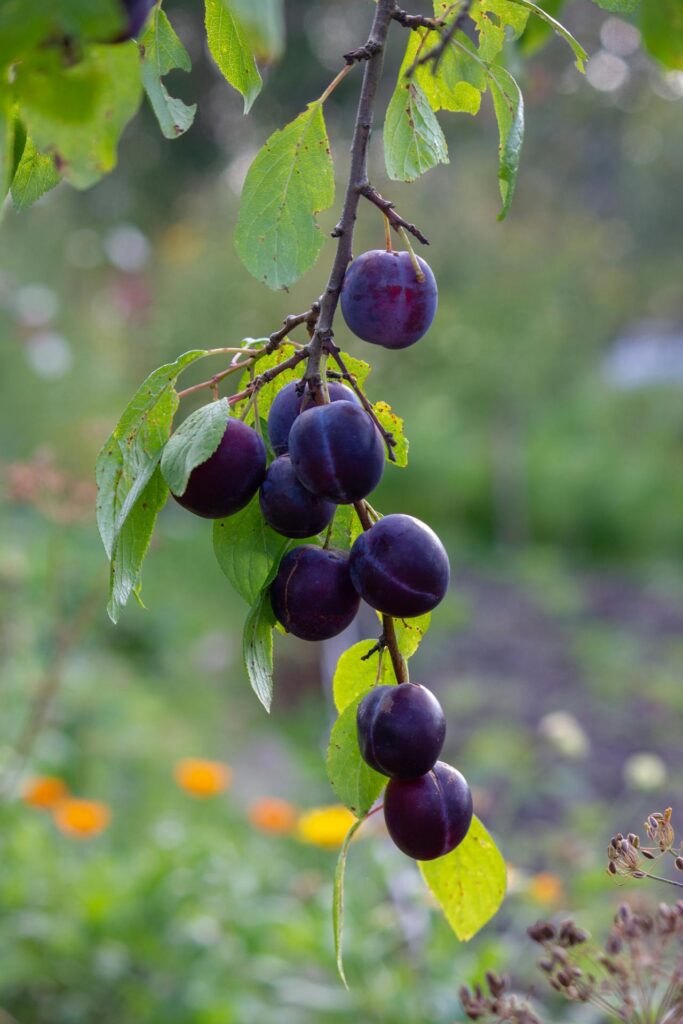
Conclusion: Embracing the Santa Rosa Plum Tree Journey
The Santa Rosa Plum Tree represents a combination of beauty, productivity, and resilience. By understanding and implementing care, gardeners ensure a thriving, fruit-producing tree.
The Santa Rosa Plum Tree is a testament to horticultural excellence. It blends historical significance, beauty, and fruit production. This remarkable tree offers gardeners a rewarding experience.
Key Takeaways
Why Choose a Santa Rosa Plum Tree?:
- Rich historical heritage
- Exceptional fruit quality
- Beautiful ornamental value
- Adaptable growing conditions
- Low-maintenance
- Many landscape applications
Final Recommendations for Success
Essential Growing Tips:
- Select the right location with full sun exposure
- Prepare the soil before planting
- Put in place consistent care and maintenance
- Check for potential pest and disease issues
- Understand the tree’s specific nutritional needs
- Enjoy the journey of cultivation and harvesting
